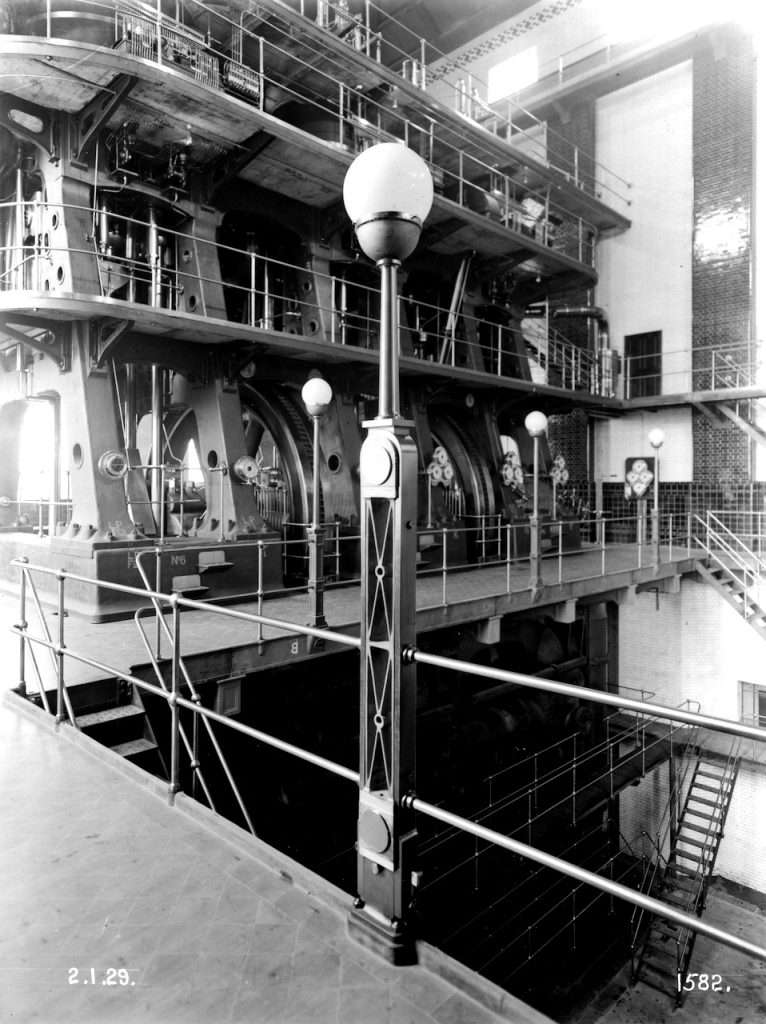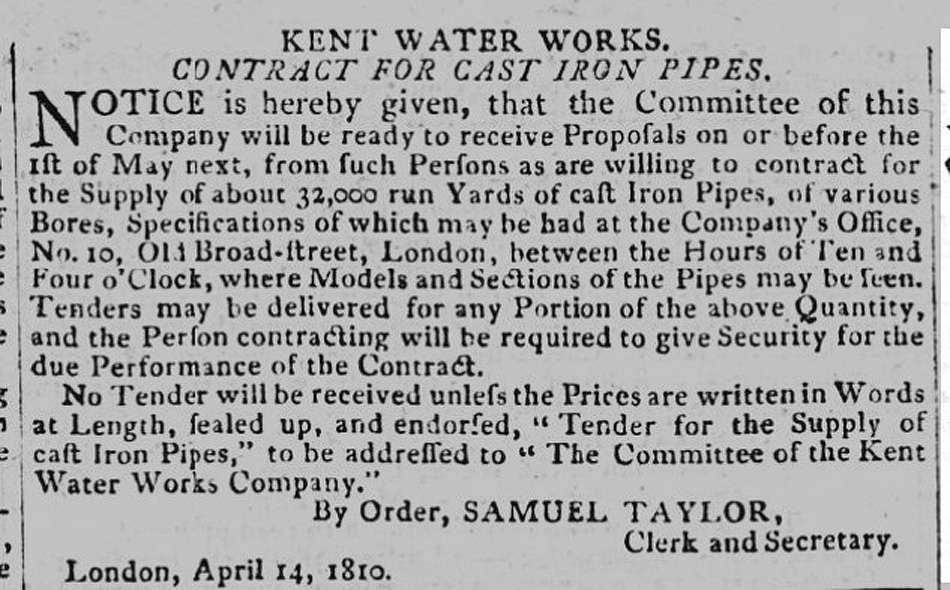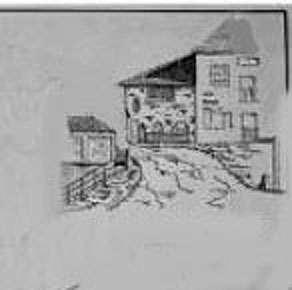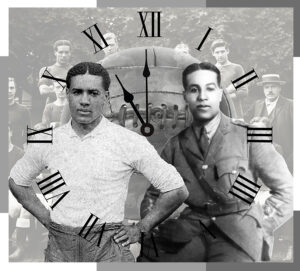So – to continue a bit more with the history of the Kent Waterworks. This is my fifth article about it and I’ve hardly started. There is a great deal more to come – hopefully talking about the history things we see every day in the streets, parks and open spaces.
In my last article I described how almost the first thing the Kent Company did when it took over the works at Brookmill was to install steam engines by Birmingham based firm, Boulton and Watt.
Since writing that article I’ve been in touch with Kempton Park Steam Museum, who turn out to have some parts of these Kent Waterworks original engines – some of which seem to have been made into lamps. Hopefully as I continue with these articles I can add in some bits and pieces which have been sent to me by the people at Kempton Park. And I would also like to thank them very much for their interest.

The other thing which was important in that last article was that the Kent Waterworks in its very first year was obliged to take on the water supply in Woolwich, along with what were a great many problems.
I will have to come back with a future article which describes some of the things which the military had already installed in Woolwich.
As far as I’m aware for the first few years after the Kent Company took over the Woolwich supply, water was sent from Brookmill to Woolwich by newly laid pipes to various destinations.

The company also had taken over a reservoir in Francis Street in Woolwich. This was known as ‘Bowater Pond’, – one of two ponds with that name. Bowater were the local landowners. The Francis Street pond was one of the sites previously used by the Military for water supply. It remained in use until it was purchased by the Admiralty in 1856 and the site was cleared to make way for the Royal Marine Infirmary. In 1825 the company advertised for contractors to work on the ‘Upper Reservoir, Woolwich Common’ which is as yet identified. Known reservoirs on the Common date from the mid 1840s.
I am very aware that quite soon I need to start talking about reservoirs and water storage – there are a surprising number in the areas, and not all built for the Kent Company. The larger reservoirs in Greenwich and Woolwich date from the 1840s and for its first thirty years or so the Kent Company appears to have concentrated on improving the works at Brookmill.
As daily life and work at Brookmill continued sometimes we get a quick glimpse of the real state of things rather than what is recorded officially. Let’s go to the 18th June 1821:-
It appears that because the Company had property in Woolwich that they had to pay rates there. Since 1815, which for Woolwich purposes was the establishment date of the Kent Company, they had been ‘rated to the relief of the poor of the parish of Woolwich’ – but ‘it was alleged that they had always evaded the payment of the rates’ and what’s more ‘taken measures to avoid the process of distress’ . I think that means that they had evaded the bailiffs when they turned up with an order for the Kent Company to pay the required sum.
Between 1815 and 1821 ‘the rates had accumulated to a sum of £8031. 13s’. That is a great deal money and the currency convertor on the National Archive web site says that in today’s prices that is £461,232.16.
So, on the 18th of June 1821, the prosecutor, James Richie, got a Justice’s ‘warrant of distress’ and went, together with a Constable, to the Kent Company’s engine house at Brookmill. They were ‘Determined to execute it by stratagem, if not by fair means’. They got there at around 1am and lurked about the area until about 4am. There was a six foot wall, defended by iron spikes, which went around the works. Ritchie and the Constable climbed up this wall and then hid ‘within’ the bulwarks’.
When the boiler workmen arrived in the morning and the engine-house was opened, Ritchie and the Constable went in. Ritchie produced his warrant and laid his hands on the steam boiler, saying that he ‘seized it for the Woolwich poor rates’. He was instantly seized by the Company Engineer, Charles Weir, who pushed him down the flight of steps which led up to the boiler. He was then dragged ‘neck and heels’ out of the engine house’ by Weir who was helped by the Company’s Surveyor, and the Engine Stoker. The Constable was thrown out next.
Once they were outside however things got friendlier and they ended up drinking rum and water ‘to cheer them after their night’s vigils.’ I don’t suppose that every day was this exciting at Brookmill. I also wonder what Charles Weir and the Surveyor were doing in the engine house at this time in the morning – presumably around 6.00 or 7:00 AM. Also in exactly what way Ritchie thought he had ‘seized’ the boiler – he could hardly carry it off to Woolwich.
To return to more normal behaviour. The first engineer to the Kent Company had been Ralph Dodd’s eldest son, Barrowdall Robert Dodd. He had been succeeded – and I don’t know the date – by Charles Alexander Weir, who had previously been apprenticed to Ralph Dodd. He died suddenly in 1829 following a haemorrhage while sitting with his wife shortly after the birth of their seventh child. A charity appeal was launched to provide financial support for this bereaved family. I can’t imagine that a diet of early morning rum and water is good for anyone’s long term health.
Important works were carried out at Brookmill under Charles Weir. In 1819 contractors were employed to excavate a reservoir on the Brookmill site. This was just the first and by the 1890s most of the area, now the park and the housing area on both sides of the river, were covered by reservoirs – but I do not know which was which in terms of age or, indeed, anything else.
In 1824 a second pumping engine from Boulton and Watt was installed. This is described as ‘exactly similar engine to the former one” and was installed alongside it in the same engine house. This engine had a long working life of 106 years – taken out of service in 1924; it was not actually scrapped until 1932, when the engine house itself was pulled down.
There were repeated orders for iron pipes in large quantities as water mains spread around this expanding district. It is said of their contemporary – South Metropolitan Gas down on the Old Kent Road, that their prosperity was based on serving a newly expanding suburban area. It is cheap to put gas – and, obviously, also water – mains into new roads and new areas. In the inner city there has to be negotiation with existing residents which comes expensive. It is very interesting to think that maybe Kent waterworks’ success paralleled that of South Metropolitan Gas.
Like the gas works the waterworks used and so ordered coal supplies in bulk ‘Three Hundred and Twenty Chaldrons of the BEST WYLAM MOOR COALS … pool measure, clear of metage, and port duties … To be delivered at the mouth of Deptford Creek’.
Meanwhile the old corn mill was still at work and let out by the waterworks. It is ‘described as an ‘old established flour mill … commanding an extensive connection’.
In 1832 William Richard Morris was appointed as engineer and he was to stay in post until retirement, eventually being replaced by his son, another William Morris – who remained until and after municipalisation in 1904.
It was during the administration of the water works at Brookmill under Morris that the Company grew. As we will see from the 1840s things really took off. Morris was to initiate considerable modernisation of the Brookmill site – achieving particularly high standards in water purity. Much work on infrastructure was provided to support military and military manufacturing in Woolwich.






